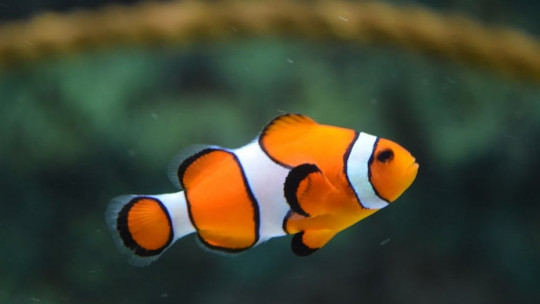Currently, when we want to investigate mental disorders in animal experiments, genetically manipulated mice are usually used to produce these disorders, which is very invasive and, of course, harmful to these animals.
However, a recent discovery related to a curious fish opens the door to the possibility of investigating mental disorders without altering the genes of domestic species.
The case of the eyeless cavefish
In nature we can find beings that fascinate the most curious and become an object of study by researchers who want to unravel all their secrets. A very specific case is the fish known as the Mexican tetra (Astyanax mexicanus).
This rare aquatic species has a special characteristic: it exists in two different forms, one with eyes and the other without them. The first form lives in rivers, while the other, in addition to being albino, lives in aquatic areas found inside certain caves and its eye globules have been degrading over time by living in the dark, to save energy, Therefore, its study can reveal more data about which genes participate in the formation of the eyes.
And that is how Masato Yoshizawa (biologist at the University of Hawaii) together with his team, chose this animal to carry out tests. The most surprising thing is that this animal could have more secrets, not only being a case of organ loss, but also becoming a good model for the study of mental illnesses in humans, such as autism or schizophrenia. Let’s see how it happened.
The comparative study to understand mental disorders
Thanks to the existence of these two populations within the same species, it has been possible to study their genetic code making crosses between the two at the laboratory level, since reproduction between both is possible. In this process it is possible to quantify a characteristic and how it is distributed in its offspring, a technique that Gregor Mendel, father of genetics, used in his study of peas. To give an example, thanks to this it has been known that a mutation in a gene known as “cbsa” is responsible for a population not developing eyes.
During their research, Yoshikawa and his collaborators contemplated that the two tetra populations were not only differentiated by their physical appearance, but there was also a great difference in their social behavior. Those that live in surface waters are sociable and even have a social structure among themselves. On the other hand, cavemen are solitary, in fact, they reject company. In addition, they present symptoms of anxiety and hyperactivity and never sleep.
Keeping these data in mind, in a first experiment, Yoshikawa crossed the populations again to see to what extent this difference in social behavior is genetically rooted or based on behaviors learned in a specific context.
Medicating cavefish
The results of their trials were presented at the 23rd International Conference on Underground Biology in Fayeteville, Arkansas. Yoshikawa states that 90% of the 101 classic genes that are related to the risk of developing mental illnesses in humans they are present in the genome of the Mexican tetra. Data that could turn this animal into a new model for the study of these diseases.
But the thing does not end here, since in another trial he treated solitary fish with the antidepressant psychotropic drug Fluoxetine (also known by its commercial brand Prozac) in combination with the antipsychotic Clozapine, causing the fish to become sociable, lowering their blood sugar levels. anxiety, swimming less frequently, and being able to sleep. With this, Yoshikawa’s team wanted to demonstrate that these fish react in a similar way to how a human patient would.
The importance of this finding is to have an animal specimen that has “symptoms” that are present in autism or schizophrenia, such as lack of sleep, hyperactivity or anxiety, and all of this naturally.
There is still much to do and more tests to be carried out, but for now the evidence indicates that the Mexican tetra fish can become a new tool to continue studies of psychological disorders, both at the genetic basis and in the research of new drugs. Even so, some experts emphasize that there is a limitation in this model, since it is a fish, since humans and fish are separated by 400 million years of evolution and the results cannot be extrapolated so lightly.









